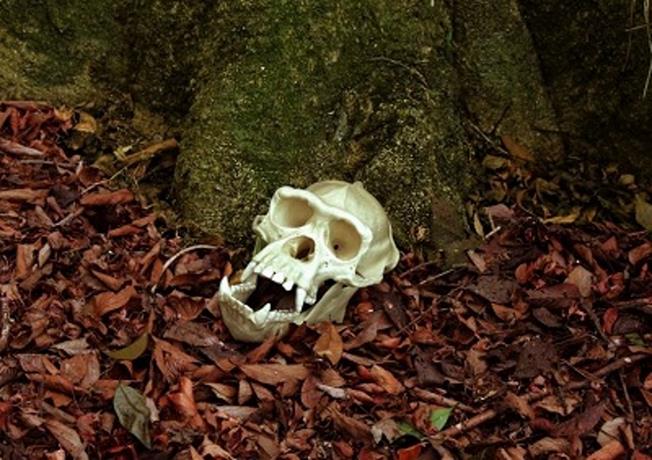A team from Kyoto University has proven that chimpanzees pay visual attention to pictures of skulls with the anatomical characteristics of its species.
Chimpanzees have been known to interact with dead members of their species, revisiting corpses, and even show mourning behavior. Elephants have also been known to do this and even interact with elephant carcasses.
But do chimpanzees show recognition and preferences in the case of conspecific skeletons belonging to their own species? Previously, the scientific community has paid little attention to this, perhaps assuming that chimpanzees have little or no knowledge of chimpanzee skeletal anatomy. The recent field of comparative thanatology has delved into this type of question, and it is the object of the new research.
"We use images of faces, skulls and skull-shaped stones that represent four different species"says the lead author of the study, André Gonçalves.
The researchers posit that chimpanzee skulls have markings similar to facesgeneral contours, and the general arrangement of the eyes, nose, and teeth likely activates a network of brain regions that originally evolved to detect and process faces.
In a nutshell, chimpanzees seem to know when a skull is chimpanzee-like, which is related to the phenomenon of pareidolia which is related to the brain’s ability to detect faces.
"This explains why we see illusory faces in things like clouds and rocks, and primate skulls are as face-like as anything in nature."adds Goncalves.
These findings, which are published in Royal Society Open Science, were consistent with previous field experiments carried out with African elephants. In 2006, Karen McComb and her team at the University of Sussex found that African elephants showed more interest in skulls and tusks than any other stimuli.
But the mechanisms might not have been the same. According to Gonçalves, wild elephants likely interacted with these skulls based on past experience. But elephant skulls lose many important facial features, such as ears and trunks, that are important for their communication.
"Chimpanzee skulls, on the other hand, still retain the general facial features"he adds.
To test their hypotheses about chimpanzee visual attention, Gonçalves and his team ran a series of three experiments using an eye tracker to map exactly where chimpanzees look and for how long.
The results show that chimpanzees not only show the greatest preference for chimpanzee faces, but also show a similar bias toward chimpanzee skulls, looking at teeth longer and more closely.
Although the research team does not conclusively determine whether chimpanzees "know" that they have a Yorick in their hands, there is room for speculation about what is going on in the minds of the chimpanzees.
"When a wild chimpanzee finds a skull, they will probably be more attentive to it than any other inanimate object in their environment, as it resembles one of their own."Gonçalves concludes.
